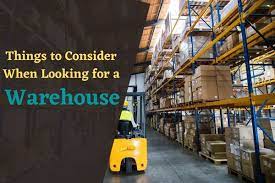
Trends and Strategies for E-commerce Fulfillment Warehousing Services in India
Introduction
The exponential growth of e-commerce in India has transformed the retail landscape, driving a surge in demand for efficient and scalable warehousing solutions. As online shopping continues to gain momentum, e-commerce companies are reevaluating their fulfillment strategies to meet the evolving needs of consumers. In this article, we delve into the latest trends and strategies shaping e-commerce fulfillment warehousing services in India.
Trends Driving E-commerce Fulfillment Warehousing Services
-
Expansion of Tier 2 and Tier 3 Cities: E-commerce companies are increasingly targeting consumers in tier 2 and tier 3 cities, leading to a geographical diversification of fulfillment centers. This expansion aims to reduce delivery times and logistics costs while catering to the growing demand from non-metro areas.
-
Adoption of Automation and Robotics: To enhance operational efficiency and meet the demands of same-day or next-day delivery, e-commerce warehouses in India are incorporating automation and robotics technologies. Automated guided vehicles (AGVs), robotic picking systems, and conveyor belts are being deployed to streamline order fulfillment processes.
-
Focus on Sustainability: With a heightened awareness of environmental issues, e-commerce companies are embracing sustainable practices within their fulfillment operations. This includes implementing eco-friendly packaging materials, optimizing transportation routes to reduce carbon emissions, and adopting energy-efficient warehouse designs.
-
Integration of IoT and Data Analytics: The Internet of Things (IoT) and data analytics are revolutionizing warehouse management by providing real-time insights into inventory levels, order status, and operational efficiency. E-commerce companies are leveraging IoT sensors and predictive analytics to optimize inventory management, minimize stockouts, and improve order accuracy.
-
Demand for Multi-channel Fulfillment: With the proliferation of online marketplaces and social commerce platforms, e-commerce sellers are diversifying their sales channels. As a result, there is a growing demand for multi-channel fulfillment services that enable seamless order processing and inventory synchronization across various sales channels.
Strategies for E-commerce Fulfillment Warehousing Services
-
Dynamic Slotting Optimization: E-commerce warehouses in India are adopting dynamic slotting optimization techniques to maximize storage space utilization and minimize picking times. By continuously analyzing SKU velocity and order profiles, warehouses can dynamically assign storage locations to products, reducing travel time and improving overall efficiency.
-
Flexible Warehousing Solutions: To adapt to fluctuating demand patterns and seasonal peaks, e-commerce companies are opting for flexible warehousing solutions such as on-demand warehousing and shared fulfillment centers. These flexible arrangements allow businesses to scale their operations up or down based on changing market conditions without committing to long-term leases or excessive capital investment.
-
Last-Mile Delivery Optimization: Last-mile delivery poses significant challenges in India's congested urban areas. E-commerce companies are implementing innovative last-mile delivery strategies such as crowdshipping, locker-based delivery, and drone delivery trials to overcome logistical hurdles and improve delivery efficiency.
-
Collaborative Logistics Partnerships: Collaboration between e-commerce companies and logistics service providers is becoming increasingly prevalent in India. By partnering with third-party logistics (3PL) providers, e-commerce sellers can leverage their expertise and infrastructure to optimize transportation, warehousing, and last-mile delivery operations, thereby reducing costs and improving service levels.
-
Focus on Customer Experience: In the competitive e-commerce landscape, providing a superior customer experience is paramount for driving repeat business and fostering brand loyalty. E-commerce companies are investing in technologies such as real-time order tracking, interactive chatbots, and hassle-free returns processing to enhance the overall shopping experience for customers.
Conclusion
The e-commerce fulfillment warehousing services in India is undergoing rapid transformation driven by technological advancements, changing consumer expectations, and evolving market dynamics. To stay competitive in this dynamic environment, e-commerce companies must continually adapt their fulfillment strategies to embrace emerging trends and leverage innovative solutions that optimize efficiency, reduce costs, and enhance customer satisfaction. By embracing automation, sustainability, data-driven decision-making, and collaborative partnerships, e-commerce players can unlock new opportunities for growth and success in the Indian market.